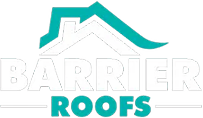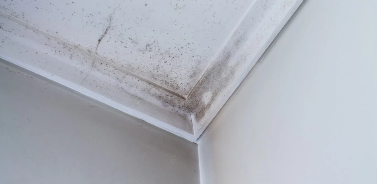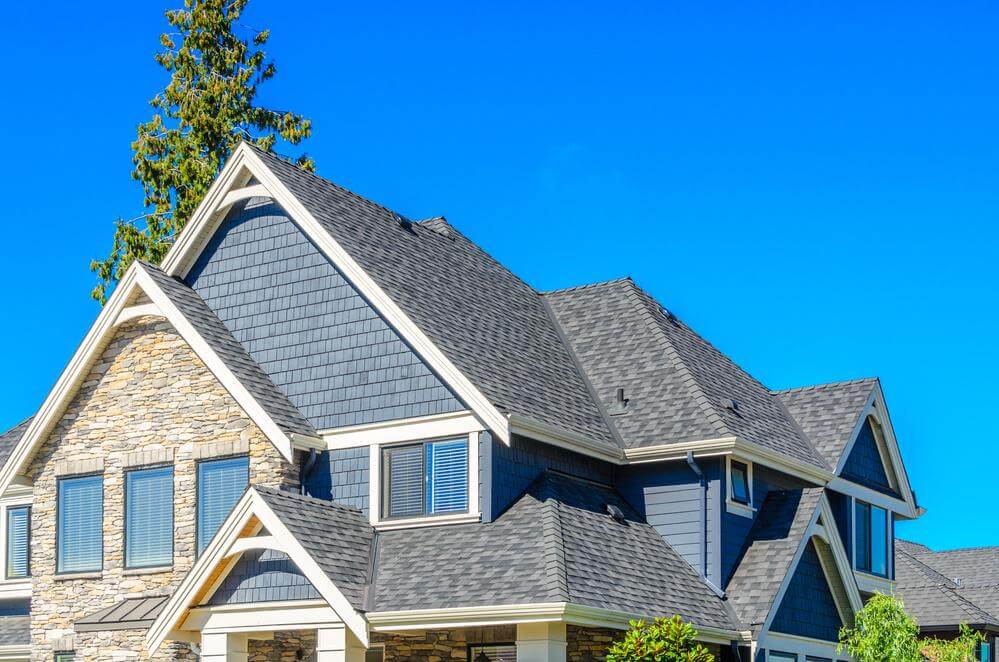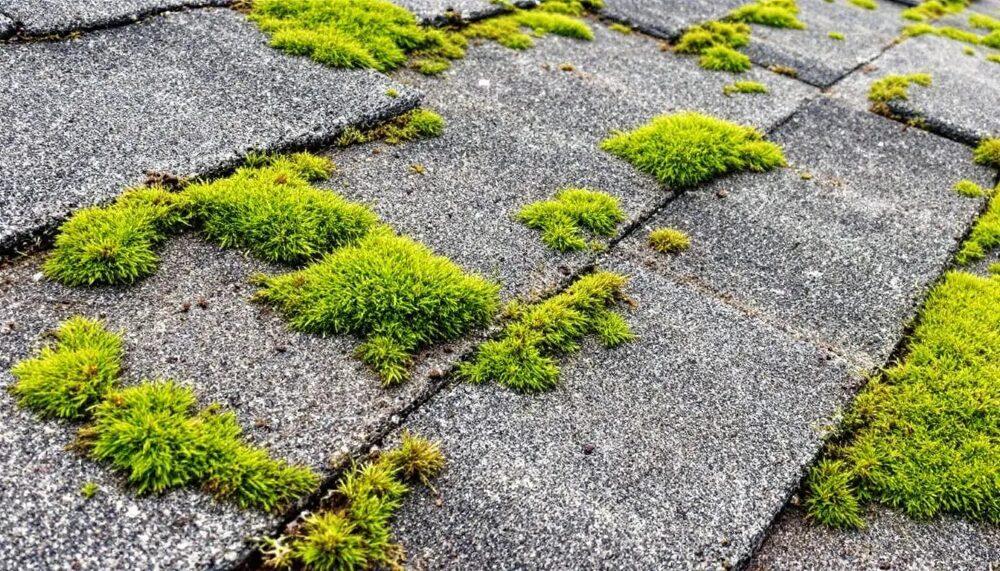Your roof is your home’s first line of defense against Kentucky’s unpredictable weather. But even a small leak can lead to significant damage if ignored. Understanding the signs of a roof leak is crucial for homeowners who want to keep their homes safe, dry, and structurally sound. There are many signs of a roof leak, and early detection is key to preventing costly damage.
At Barrier Roofs, we help Kentucky homeowners detect and address roof leaks before they become major problems. Let’s explore the common signs and how you can protect your home.
Key Takeaways
- Stains, peeling paint, and sagging ceilings often point to hidden leaks.
- Roof leaks can cause mold growth, structural damage, and energy loss.
- Regular roof inspections help catch leaks early.
- Barrier Roofs offers free inspections and expert repairs in Kentucky.
1. Water Stains on Ceilings or Walls
One of the earliest and most visible signs of a roof leak is water stains on interior ceilings or walls. These stains often appear as brown or yellowish spots and may grow over time if the leak continues. A ceiling stain is a classic indicator of a roof leak and should not be ignored. In Kentucky, frequent rain and humidity make this issue more common, especially in older homes.
If you notice new water stains, it’s wise to schedule a professional roof inspection to pinpoint the source. Prompt action helps prevent costly damage to drywall, insulation, and your home’s structure.
2. Peeling or Bubbling Paint
Moisture from a roof leak can travel behind walls and cause paint to bubble, peel, or crack. This is particularly noticeable near ceiling edges or where walls meet the roofline. Peeling paint near an exterior wall may also indicate water infiltration from a roof leak.
Kentucky’s high humidity amplifies the damage, as trapped moisture takes longer to dry out. Left unchecked, peeling paint may be an early warning of more extensive water damage behind the surface.
Barrier Roofs can assess these issues during a free inspection and help determine whether your roof is the culprit.
3. Sagging Ceilings or Spots That Feel Soft
If you notice a ceiling that sags or feels soft to the touch, it’s a red flag that water has soaked into the materials above. Damaged ceilings are a common result of prolonged roof leaks, often leading to stains, mold, and rot if not addressed quickly. Prolonged leaks weaken drywall, insulation, and even the roof structure itself.
In Kentucky homes, this problem can worsen quickly due to rapid changes in temperature and moisture levels. A sagging ceiling poses safety risks, so don’t delay getting it inspected.
4. Mold or Musty Odors
Water leaks create the perfect environment for mold and mildew to thrive. Mold can grow unseen in attics, between walls, or under roofing materials. You might first notice a musty smell even before visible mold appears.
In Kentucky’s humid climate, mold issues can escalate quickly, posing health risks for your family. Moist air trapped in the attic or walls can accelerate mold growth, making it even more important to address leaks promptly. Mold remediation can be costly, so early detection and roof repair are critical.
5. Missing, Curling, or Damaged Shingles
Sometimes, the signs of a roof leak are visible from the outside. Missing, cracked, or curling shingles are common indicators that your roof’s protective barrier is compromised. Shingles missing from your roof are a key sign to look for during roof inspections, as they can expose your home to water infiltration.
Storms, strong winds, and age can all cause shingle damage, especially in Kentucky’s variable climate. Damaged or missing shingles can leave a hole in the roof, allowing water to enter and cause further problems.
Regular roof inspections help spot and address these issues before they lead to leaks and interior damage.
Learn about our roofing services for Lexington homeowners
6. Drips or Moisture in the Attic
Your attic can reveal a lot about your roof’s condition. Attic access is important for a thorough inspection. During or after a rainstorm, check for drips, damp insulation, or wet wood. Also, look for light coming through the roof, which can indicate holes, tiny holes, or small holes that may allow water intrusion. Even minor moisture can eventually lead to significant damage. Water dripping from the attic ceiling or insulation is a clear indicator of a leaking roof.
In Kentucky, where heavy rain and snow are common, attic inspections are essential to catching leaks early. Inspect for tiny holes and small holes in the roof decking or around pipes, as these can allow water to enter. Holes in the roof or around skylights, vents, or pipe penetrations can be a source of leaking. A leaking roof can cause the attic to heat up, leading to warm attic air and moisture buildup. Proper attic ventilation, including air chutes, helps move warm attic air out and prevent moisture problems. Check pipes and pipe penetrations for signs of leaks or rusty pipes. Sometimes a plumbing leak can be mistaken for a roof leak, so check both. Inspect the roof decking and roof’s framing for signs of water damage or mold. Check around skylights for leaks or moisture. Turn off the attic lights and look for light shining through the roof as a sign of damage. Monitor how water flows in the attic and ensure a proper water barrier is in place. A gutter apron at the roof edge is important to prevent water from seeping into the attic or walls. Check the ground around the house for signs of water pooling or improper drainage. Inspect the roof edge for signs of water intrusion. Assess how much water has accumulated in the attic after a leak. Remember, a small leak can quickly become a bigger problem if not addressed. Most leaks start as fairly small issues but can escalate if left unchecked. Early detection is key to prevent water from causing further damage.
See how we serve homeowners in Corbin, KY
7. Higher Energy Bills
Leaks in your roof can allow air to escape, leading to higher heating and cooling costs. If your energy bills are rising without explanation, your roof might be part of the problem.
Leaks can affect your home’s insulation, causing your HVAC system to work harder. In Kentucky, where summers can be hot and winters cold, energy loss from a leaky roof can be significant.
8. Roof Vent Issues
Roof vents play a crucial role in keeping your attic dry and your roof healthy, but they can also be a common source of roof leaks if not properly maintained. Damaged or poorly installed roof vents can allow water to seep into your attic, leading to moisture buildup that threatens your insulation, ceilings, and even the roof’s framing. Over time, this excess moisture can encourage mold growth and cause serious water damage to your home.
Some telltale signs of roof vent issues include unexplained water stains on ceilings, walls, or even exterior walls, as well as rusted gutters and downspouts near vent locations. Damaged vents may also let in rainwater during storms, allowing water to travel along the roof and into your living spaces. If left unchecked, these leaks can escalate quickly, resulting in costly repairs and further damage to your home’s structure.
To prevent moisture buildup and roof leaks, it’s important to include roof vent inspections as part of your routine maintenance. Make sure vents are securely fastened, free of cracks, and properly sealed. If you notice any signs of damage or suspect your vents are allowing water inside, contact a professional roofer right away. Prompt repair of damaged vents can help prevent further damage, protect your attic and insulation, and keep your roof watertight for years to come.
9. Roof Age and Maintenance Factors
The age of your roof and how well it’s been maintained are two of the biggest factors in preventing roof leaks and protecting your home from serious water damage. As roofs get older, their materials naturally wear down, making them more vulnerable to leaks—especially after heavy rain or in cold climates where freeze-thaw cycles can take a toll.
Routine maintenance is key to catching the early signs of a roof leak before they turn into bigger problems. Regularly inspect your shingles, gutters, and flashing for any signs of wear, missing pieces, or damage. Even with diligent care, leaky roofs can still develop as your roof ages, so it’s important to act quickly if you notice any warning signs like water stains, mold growth, or damp spots.
Delaying repairs can lead to further damage, including rotted framing, mold, and costly water damage inside your home. If you’re unsure about the condition of your roof, a professional roofer can assess its age, check for hidden leaks, and recommend repairs or replacement if needed. By staying proactive with maintenance and addressing issues as soon as they arise, you can extend the life of your roof and prevent the headaches that come with leaky roofs.
FAQ: Signs of a Roof Leak
What is the most common sign of a roof leak? Water stains on ceilings and walls are the most common early sign of a roof leak.
Can a small leak cause serious damage? Yes. Even minor leaks can lead to mold growth, structural issues, and costly repairs if not addressed promptly.
How often should I have my roof inspected in Kentucky? We recommend a professional inspection at least once a year, and after severe storms.
Are roof leaks always visible from inside the house? Not always. Some leaks stay hidden in attics or behind walls until significant damage occurs. Sometimes a plumbing leak can mimic the signs of a roof leak, so it’s important to have a professional inspection to determine the true source.
Does homeowner’s insurance cover roof leaks? Coverage varies depending on your policy and the cause of the leak. Barrier Roofs can help navigate insurance claims.
Ready to Protect Your Home from Roof Leaks?
If you’ve noticed any of these signs of a roof leak, don’t wait for the damage to get worse. Barrier Roofs offers free, professional roof inspections for homeowners across Kentucky. Our experienced team can pinpoint leaks and provide clear, honest recommendations to keep your home safe.
Contact Barrier Roofs today for your free roof inspection!




